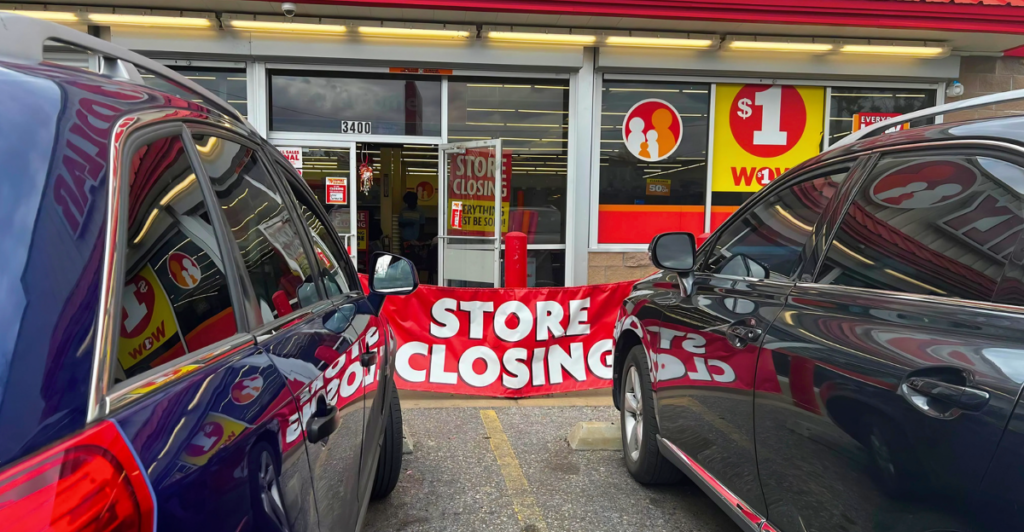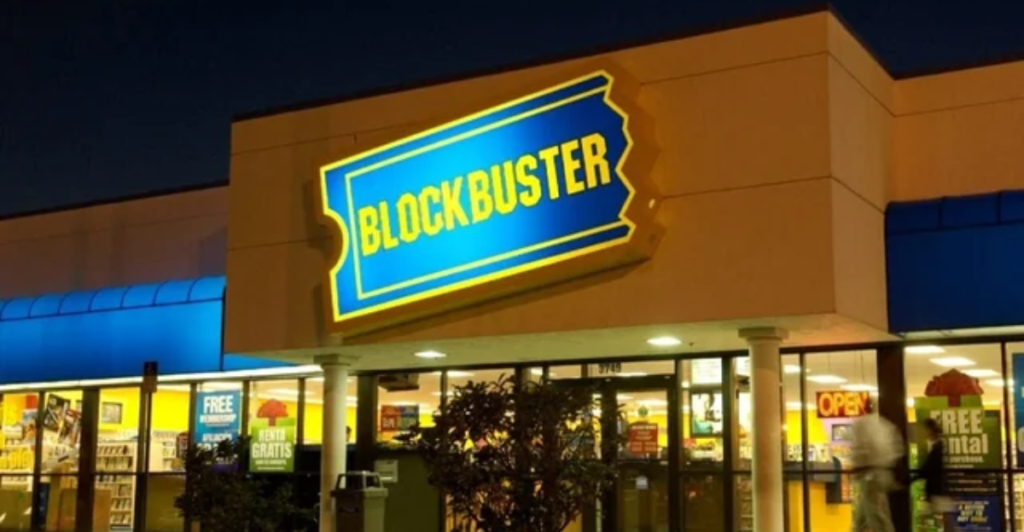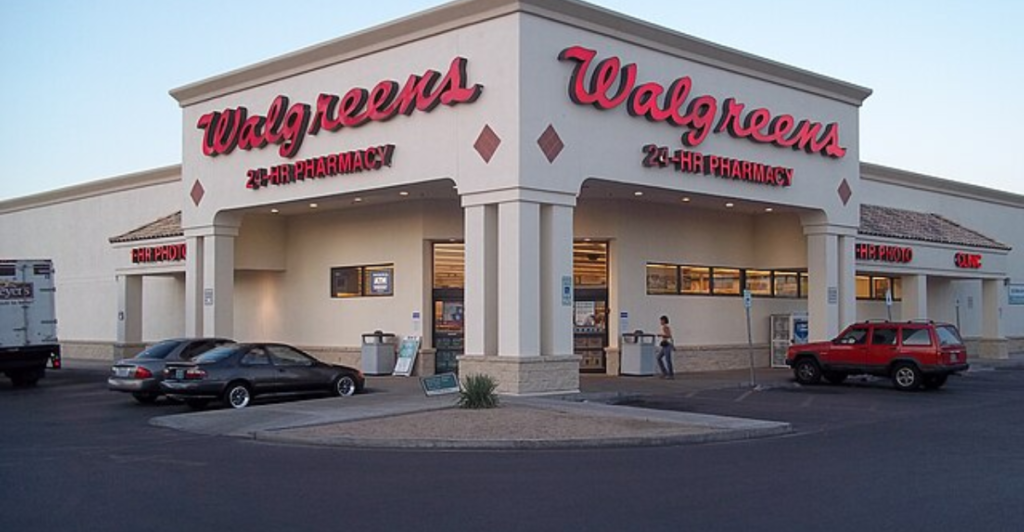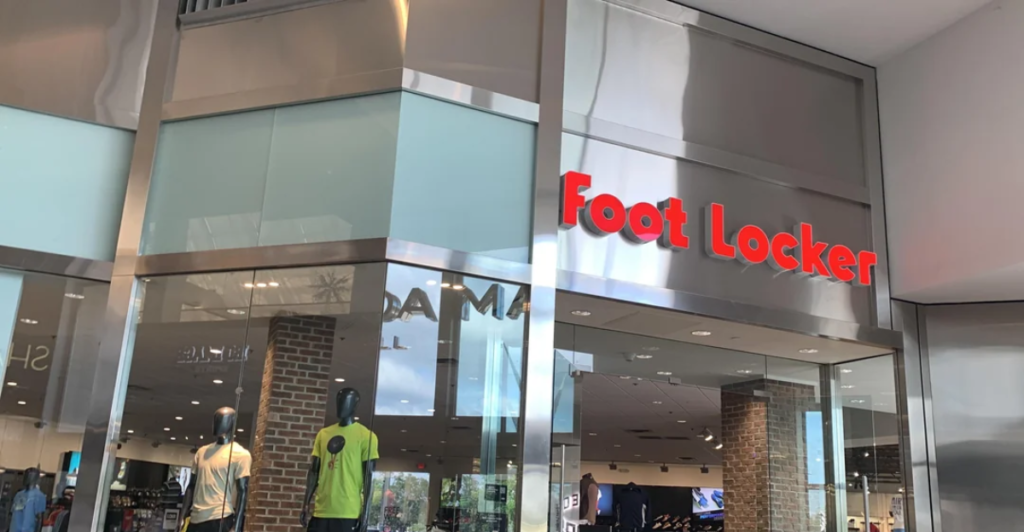
Over the last few years, American retail has transformed dramatically. Beloved stores that once dominated are slowly vanishing. The rise of online shopping, changing consumer habits, and economic pressures have forced many of America’s most iconic stores to close their doors forever.
Malls that once bustled with activity now stand eerily quiet with their anchor stores shuttered. Unfortunately, the COVID-19 pandemic accelerated this trend as it pushed struggling retailers over the edge. For many people, the closure of these iconic stores marks the end of an era, with no more weekend trips to people’s favorite stores or the thrill of in-person shopping. The retail landscape will never be the same again. Let’s take a look at beloved American retail chains that are shutting down and never coming back.
1. Blockbuster—A Friday Night Tradition Lost

Blockbuster Video used to be the heart of American movie nights. Families and friends would flock to its blue-and-yellow stores to rent the latest releases, making it a cultural phenomenon. It’s hard to believe that at its peak, Blockbuster had more than 9,000 locations across America. However, the rise of streaming services like Netflix and Hulu made physical rentals outdated.
Sadly, Blockbuster’s business model couldn’t adapt fast enough to these changes, which led to its bankruptcy in 2010. The last corporate-owned stores closed soon after, and only a single franchise remains in Bend, Oregon. For millions, Blockbuster’s demise symbolizes the end of an era and the unstoppable march of digital convenience.
2. The Fall of Family Dollar

Family Dollar has been a lifeline for many budget-conscious Americans with its affordable groceries and household essentials. With thousands of these stores across the country, it has served countless communities, especially in rural and low-income areas. However, mounting financial struggles, increased competition, and inflationary pressures have taken a toll.
In early 2024, Dollar Tree announced plans to close approximately 600 Family Dollar stores, and an additional 370+ stores would close once leases expire. However, thankfully, Family Dollar is not shutting down entirely just yet.
3. Party City—No More Balloons on Main Street

Party City, America’s largest party supply retailer, will close all 700 of its stores in 2025. Unfortunately, the company, which has filed for bankruptcy twice in recent years, cannot overcome mounting debt and declining foot traffic. For decades, Party City was the best place to find balloons, costumes, and decorations for every occasion.
The closure of this iconic store marks the end of a go-to destination for birthdays, graduations, and holiday celebrations. With Party City gone, many families and event planners will have to rely on online retailers or smaller local shops. The loss of Party City is a blow to spontaneous celebrations and the tradition of in-person party planning.
4. Joann Fabrics—The End of a Crafting Era

Joann Fabrics, which has been a staple for crafters and hobbyists across the nation, is closing all 800 of its stores in 2025. The company has faced years of financial instability, two bankruptcy filings, and competition from online craft suppliers, which have finally caught up with the brand. For decades, this was the go-to store for fabric, yarn, and creative inspiration.
Its closure will leave a massive void for sewing enthusiasts, teachers, and DIYers who rely on hands-on shopping and expert advice. Unfortunately, the closure of these stores also means the loss of a community hub where people gathered for classes and to share project ideas. Joann’s closure marks a major shift in how Americans access craft supplies.
5. Walgreens and CVS—Pharmacy Closures Create Health Gaps

In 2025, major pharmacy chains are struggling. Walgreens is closing 500 stores, and CVS is continuing to shut down hundreds more. These closures are especially concerning for rural and low-income urban areas, where pharmacies often serve as health clinics and essential service providers.
With fewer local pharmacies, people have to travel farther for prescriptions and basic care. These changes are happening because of reimbursement pressures, increased competition from big-box and online pharmacies, and the need to cut costs. As Walgreens and CVS close down, “pharmacy deserts” are spreading across the country, affecting millions of Americans.
6. Big Lots—Discount Shopping in Decline

Big Lots has always been known for its affordable home goods and groceries. However, this iconic American discount retail chain is facing a major downsizing in 2025. Up to 601 locations are at risk of closing, though new ownership could save some of them. The chain has struggled with changing consumer habits, inflation, and intense competition from online retailers and other discount stores.
Big Lots has served as a vital source of budget-friendly essentials for many communities. Its potential closure means that there will be fewer options for budget-conscious families and another hit to the already shrinking pool of discount retailers.
7. Macy’s and JCPenney—Department Stores Fade Away

Department stores, which were once the anchors of American malls, are disappearing at an alarming rate. In 2025, Macy’s is closing 66 underperforming locations, while JCPenney is shutting down eight more. Both chains are struggling to adapt to shifting consumer preferences and the rise of e-commerce.
These closures show the ongoing decline of legacy retailers that once shaped the way people shopped. As stores like Macy’s and JCPenney disappear, malls lose anchor tenants, and shoppers lose the convenience of finding everything in one place. Their fading presence is a clear sign of how drastically the retail world has shifted in the last ten years.
8. Foot Locker and Specialty Retailers Retreat

By 2026, Foot Locker will close more than 400 stores, with a significant amount of stores already shutting in 2025. The company is shifting its focus to larger, experience-driven locations and niche markets. Meanwhile, specialty apparel brands like Volcom, Billabong, and Quicksilver are closing over 100 stores after their parent company filed for bankruptcy.
These closures reflect the broader struggles of mall-based and lifestyle retailers, who face intense competition from fast fashion and e-commerce. As specialty stores vanish from malls and shopping centers, consumers lose access to unique brands and in-person shopping experiences that once set these retailers apart.
The Legacy of Lost Chains

The shutdown of beloved American retail chains leaves behind more than just empty buildings. It takes away spaces where memories were made and communities came together. These stores were more than places to shop; they were where families bonded, friends met up, and traditions took root. Their disappearance marks a deeper shift in how we shop and connect with one another.
As online shopping continues to grow, communities are adjusting to a new normal. Still, the nostalgia for these stores lingers, reminding us of a time when local shops offered not just products but a sense of place and togetherness. While some brands may survive online, the experience of walking those aisles and feeling like you’re a part of something is quickly disappearing.
Discover more DIY hacks and style inspo- Follow us to keep the glow-up coming to your feed!

Love content like this? Tap Follow at the top of the page to stay in the loop with the latest beauty trends, DIY tips, and style inspo. Don’t forget to share your thoughts in the comments — we love hearing from you!